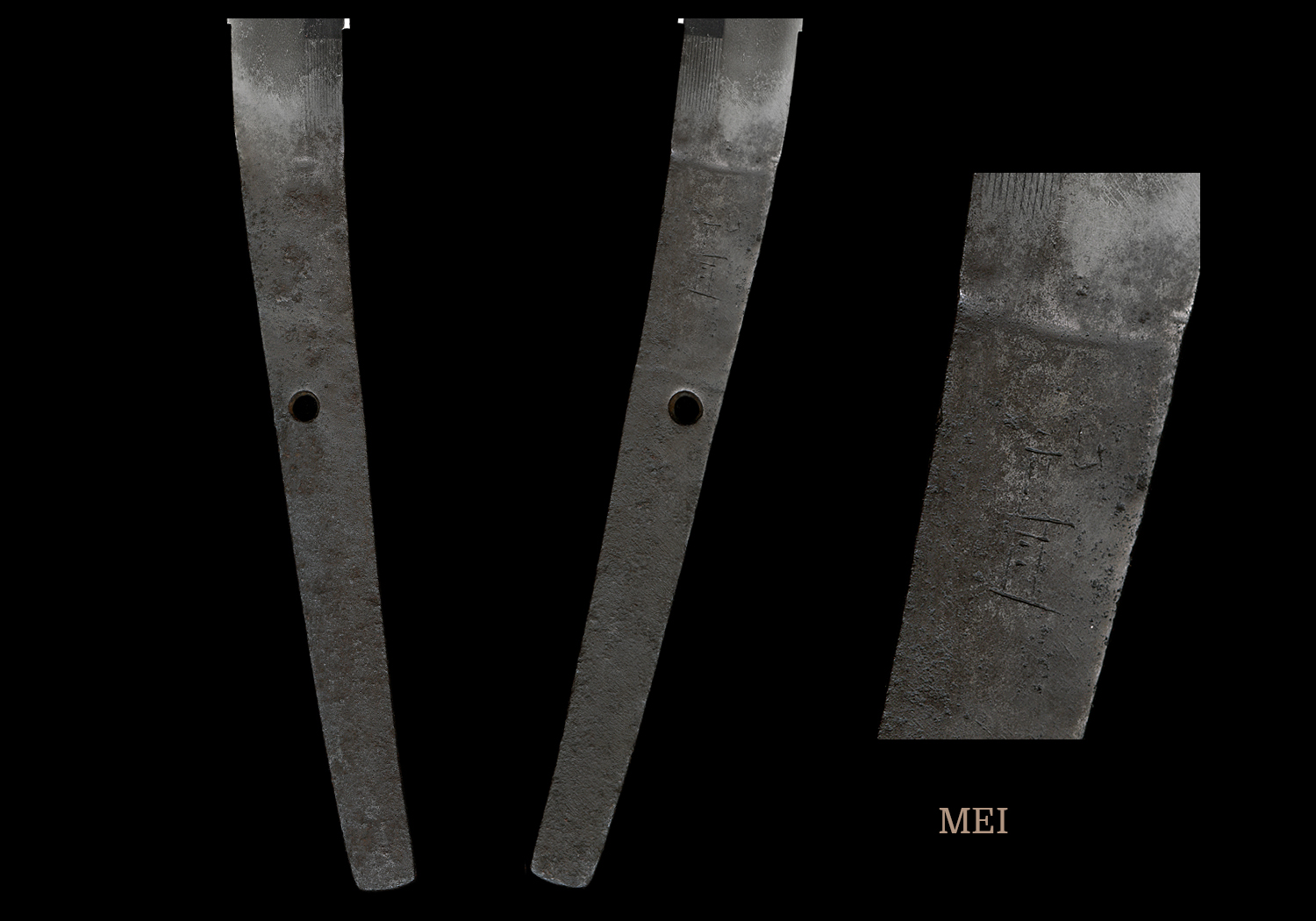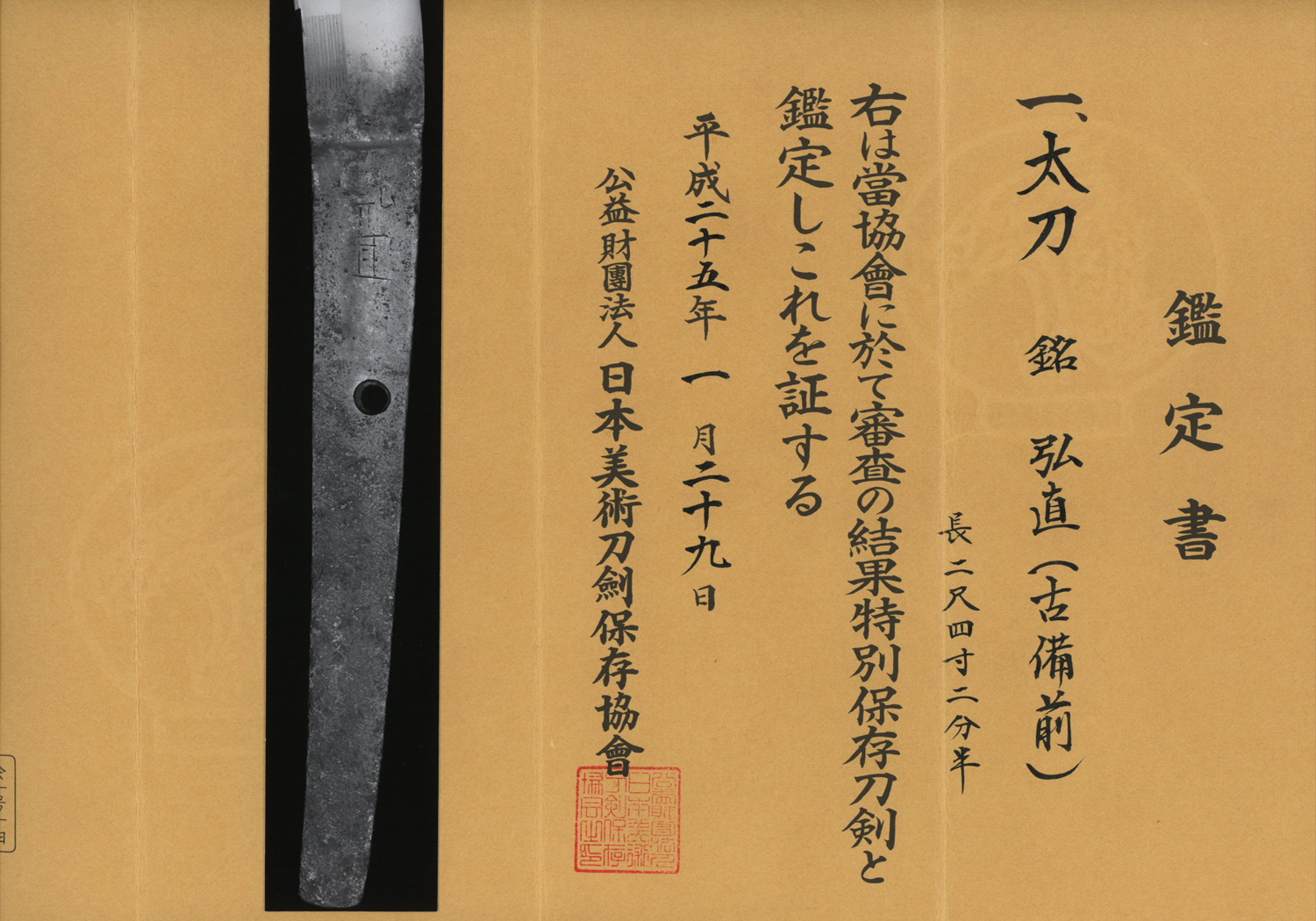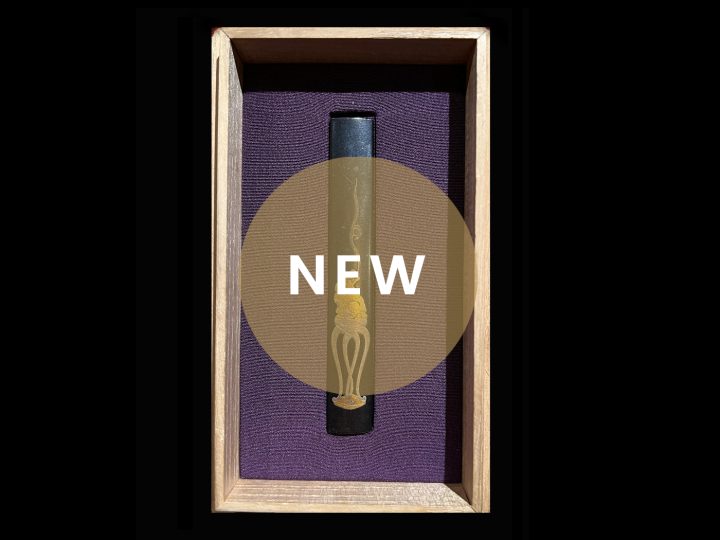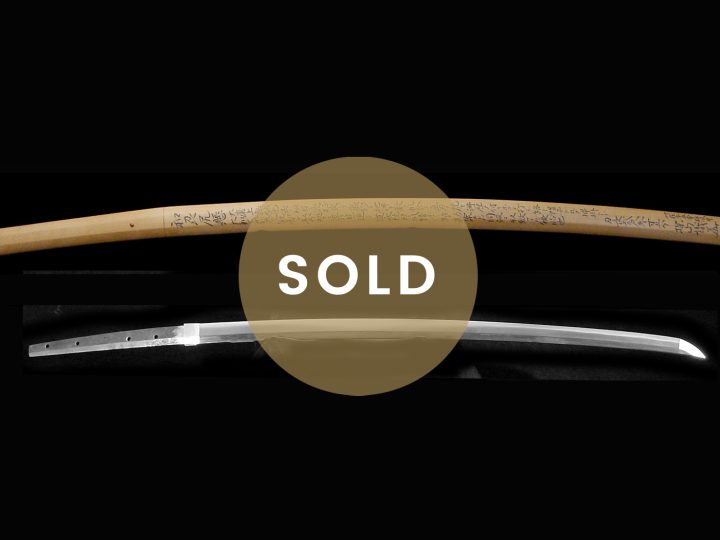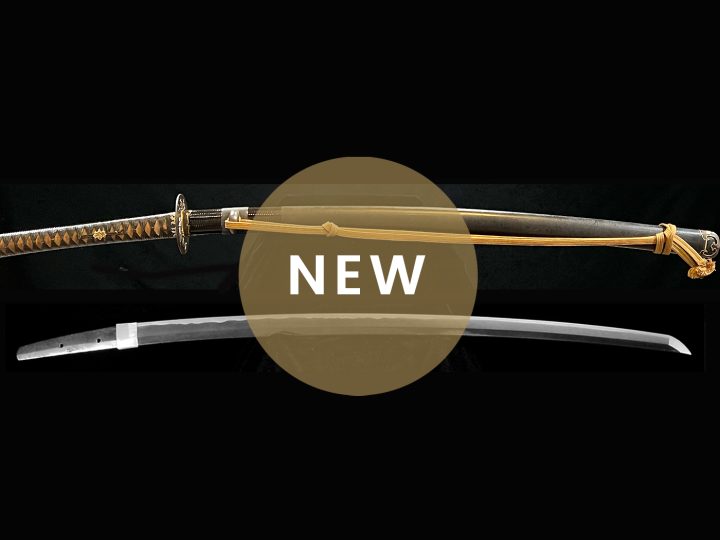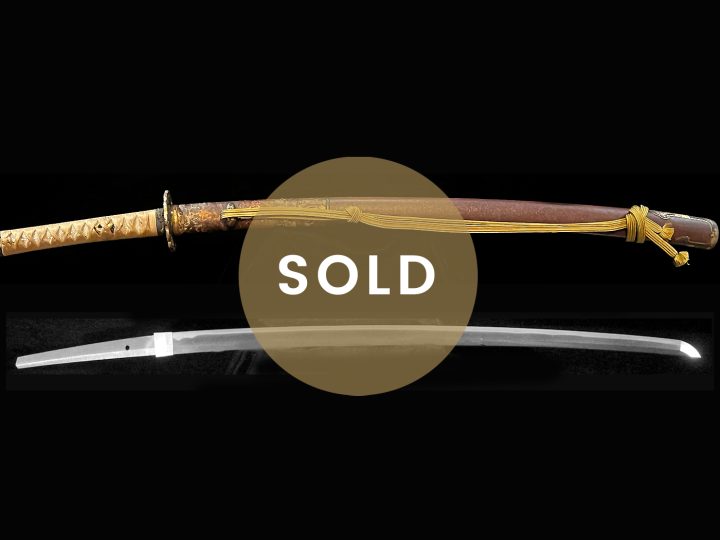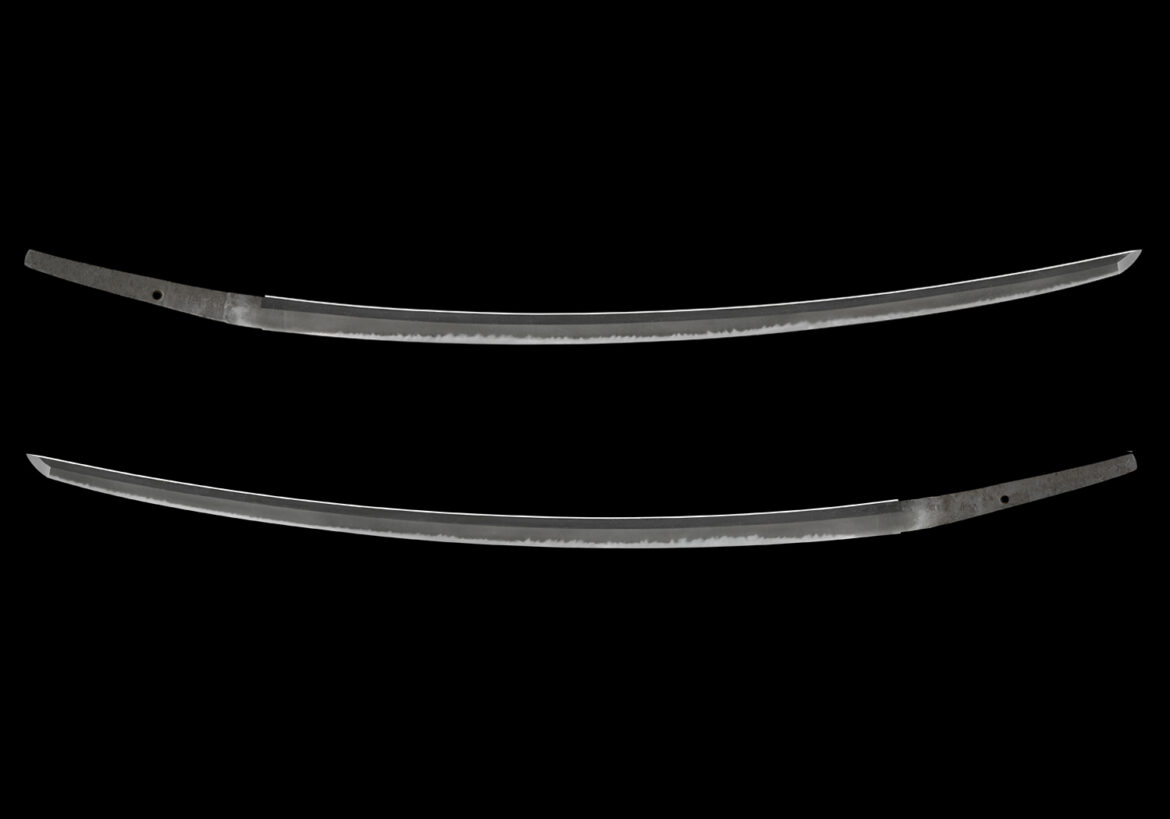
The Bizen Province, since ancient times, produced many fine swordsmiths who worked throughout all the periods of sword history from Heian down through the Shinshintô periods and, indeed, even today. Various reasons are given for this situation and the answer probably rests with the fact that Bizen has been a source of good sand iron, a source of making good charcoal (Bizen even today produces some of the best charcoal in Japan), and a ready supply of good water. All the basic ingredients of sword making. It was in this area where the conditions were almost perfect that during the Heian Era the Ko-Bizen school started.
The term “Ko-Bizen” has meant Bizen smiths who were active and swords that were made in Bizen Province up to the Genryaku Era (1181). Bizen has produced the largest number of fine swordsmiths throughout the history of the Japanese sword and overwhelmed other provinces between the middle of the Hein and Kamakura Periods. General workmanship of Bizen swords is as follows; their sugata looks somewhat less elegant than that of Yamashiro swords but more powerful…….. The itame and ko-itame hada of Bizen swords are a little rougher than those of Yamashiro swords but finer than that of Hoki swords…….. Utsuri is one of the important features of Bizen swords and becomes conspicuous on their works from the middle of the Kamakura Period. They temper ko-midare in ko-nie-deki accompanied with thick nioi-guchi and their hamon in nioi-deki is never seen……..
The classic workmanship mentioned above was still demonstrated by Ko-Bizen smiths after the beginning of the Kamakura Period…….. I think that we should reset the active term of Ko-Bizen smiths and get rid of the later limit of the Genryaku Era (1181). (Nihon Kotô Shi by Dr. Honma Junji).
The origins of the Ko-Bizen school, which is the oldest among the Bizen schools, start in the late Heian period and continued into approximately the middle of the Kamakura period. One theory has Sanenari (實成), who was reported to have been active around the Tenryaku Era (947-957) as the founder of the Ko-Bizen school. There being no surviving examples of his work, however, most people to think of his son, Tomonari (友成), and Sukenari (介成) as the founders of the school. Both smiths worked in the Eien Era (987-989).
Working contemporarily with Tomonari and Sukenari was one of the most famous of all Ko-Bizen smiths, Masatsune. Masatsune worked around the Chotoku Era (995-999) and left us many extant examples of his works. Another close contemporary was the famous smith Ko-Bizen smith, Kanehira. Kanehira is well known for his famous National Treasure sword the O-Kanehira, perhaps the one of the most famous sword in Japan.
For more information about the Ko-Bizen school, please refer to the following article, Ko-Bizen.
We are offering for sale an ubu and signed tachi by the Ko-Bizen smith, Hironao (弘直). It has a deep koshi-zori and an overall gracefulness that one would expect of a blade from this school and this time period. There is funbari at the machi and a marked narrowing of the blade as it approaches the kissaki. The kissaki is small with a ko-maru bôshi with a very short kaeri. The kitai is a very tight ko-mokume creating an almost moist looking hada. There are areas of chikei and numerous areas of jifu-utsuri. The hamon is reminiscent of the works of Tomonari in that it is nie based with profuse ji nie along the habuchi and into the ji. The hamon is a combination of ko-chôji mixed with areas of midare becoming almost suguha near the kissaki as it enters the bôshi. The nakago is ubu and slightly kijimomo shaped with the niji mei written above the mekugi-ana near the top of the nakago. The handwriting is somewhat archaic as one would expect.
There is an extensive sayagaki written by Tanobe Sensei as follows:
備前國弘直
⽣茎⼆字在銘也雉⼦股茎ニ呼應シテ銘字モ古朴然トス同⼯鎌倉初期貞應・⽂暦頃ノ古備前鍛冶
ト傳へ現存スル作ハ寡ナシ姿態・地・刃共ニ古⾹⽽深キ味ワイヲ醸成シ古備前⼀類ニ稀ナ焼落
シヲ⾒セル點モ注⽬サル珍々重々
刃⻑弐尺四⼨⼆分余有之
惟時壬⾠暦葉⽉
探⼭邉道観并誌「花押」
Hironao from Bizen Province
This blade has an ubu-nakago and bears a niji-mei, with both the kijimomo shape of the former and the style of the latter being classic and unpretentious. It is said that Hironao was a Ko-Bizen smith who was active in the early Kamakura period, i.e., around the eras Jōō (1222-1224) and Bunryaku (1234-1235), but extant works are rare. The shape and the jiba of this blade are of a very tasteful classical elegance and it should be noticed that a yakiotoshi, as seen here, is rare for Ko-Bizen works. – Very rare, very precious.
Blade length ~ 73.3 cm
Examined and written by Tanzan Hendō (Tanobe Michihiro) in August of the year of the dragon of this era (2012) + monogram.
This magnificent blade comes with NBTHK Tokubetsu Hozon papers. The blade has just recently returned from having its polish refreshed. Unfortunately this polishing was not completed in time to submit this blade to the most recent Jûyô shinsa in November. To say that it is an excellent candidate for Jûyô Tôken certification is an understatement and should I still own it at the time of the shinsa in 2020, it will definitely be submitted. If it finds a new home prior to then, I strongly encourage its new owner to submit it for said certification. Signed, ubu, early Kamakura era, Ko Bizen blades are, as Tanobe Sensei points out in his sayagaki, “very rare and very precious”.
SOLD







